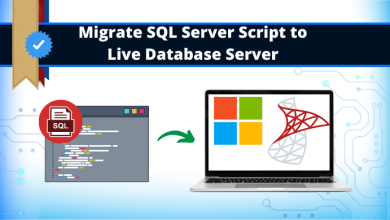A Complete Solution to Recover Exchange Database

Throughout this post, we’ll be taking a sequential approach to the Recover Exchange Database. Also, we talk about a third-party specialized Exchange recovery manager formed by Shoviv software. Microsoft makes it possible for Exchange Management Shell to create an Exchange database recovery. This special solution also uses a mailbox database to mount and get data from a restored database as part of a recovery operation. After making an Exchange recovery, you can move a recovered or restored mailbox database into it. Then, you can use the New-MailboxRestoreRequest cmdlet to pull data from the recovered database. After the data is pulled out, it can be sent to a folder or added to an existing mailbox.
Exchange Database Recovery Approaches:
To Recover Exchange Database, you can do by using manual methods or professional third-party software. The manual process doesn’t work perfectly, so you can only use it to fix small corruptions. And although we discussed both Exchange recovery methods here, let’s know them.
Manual methods:
Microsoft lets the ESEUTIL process to Exchange database recover that has been damaged. It is the primary way to fix the problem with Exchange mailbox corruption. This way solves the damaged or factually incorrect data in the page and table levels of the mailbox.
Note: This method can be used if you only don’t want to lose emails and data between the last backup and a major failure.
Using EseUtil
The first important thing to look at is if the database can be recovered in a healthy form. To use the EseUtil command, use the Exchange Management Shell and enter the following command to get information about your database.
Eseutil /m<hpath to the EDB file for the database>
Note that the line reading “Log required” must be considered. Now, use weak recovery to attempt database recovery. There may be a chance that the database can be repaired via a “soft recovery.” Soft recovery may be started using the /r option listed below.
EseUtil /r E04 /l “C:\EDB\Logs” /d “C:\EDB\DB2.edb”
This process to Recover Exchange Database may take some time, depending on the size of your database. If the status command shows such, it should now be a “Healthy Shutdown”. If this is the case, the harm has been minimized, and the tool has provided the necessary solution. In other words, you’re good to go with mounting your database. If this isn’t the case, the /p argument must be used to make a hard Exchange database recovery. Before attempting a rigorous recovery, keep these things in mind:
- You’ll need ample space.
- Data loss is essential because it removes incorrect data from the system.
- There is no assurance that it will solve the complete issues.
- If you use this command, you will be unable to contact help from Microsoft.
Then run the hard Exchange recovery with the /p parameter, mentioning the location of your EDB file if you agree with what has been said thus far (For example- EseUtil /p “C:\EDB\test.edb”).
When this procedure is completed, the database should be in a “Healthy Shutdown” condition. However, if the shutdown condition is sound, mounting the database will need you to do defragmentation. To do this, you can use the command prompt::
New-MailboxRepairRequest -Database test -CorruptionType AggregateCounts
The downsides of the Native approach:
- You have a lot of time to perform this recovery, even if you’re a seasoned user.
- With the EseUtil, it’s not assured it will function. Adding to this, you will not receive any assistance from Microsoft if you do so.
- You will lose all of the modifications made from the previous backup until the time of the crash if you use this method to recover the database.
Using the finest Recovery Software
So, there’s no need to panic. As a result of extensive research, Shoviv Software has created the best recovery solution. Shoviv Exchange recovery manager for Exchange database recovery may be used as a specialized solution to recover a damaged Exchange database. Using this efficient software, you can get recover Exchange Database and running quickly. It’s primarily designed for Exchange data recovery, but it can also make searches, imports, exports, Exchange server recovery, and recovery of complete mailboxes or specific files.
Shoviv’s tool works for Exchange:
- It can make both full and incremental Exchange database recovery.
- Allows you to recover inaccessible EDB files and put them back where you want.
- You can use it to organize the public folder and archived mailboxes.
- It’s an excellent thing to migrate to Exchange and Office 365 and upgrade.
- It makes it easier to save data in many file types, such as HTML, RTF, MSG, EML, vCard, and vCal.
Final words
The manual methods are so hard to use that only an expert can make them simple. The software mentioned above does excellent work for Exchange database recovery. It is also a solution that many users, experts, and MVPs express is secure. Shoviv Exchange recovery manager doesn’t take much time to Recover Exchange Database, and users can keep working while their emails are slowly imported.
You can even use the free demo version to try it out before buying the full version.




